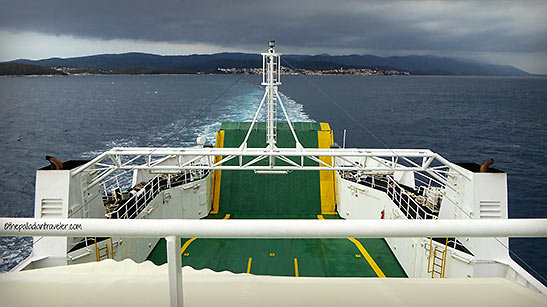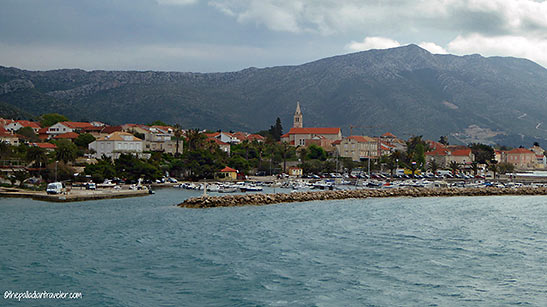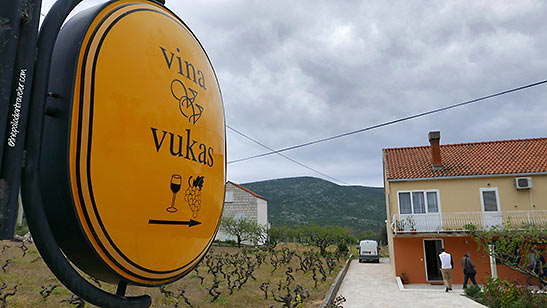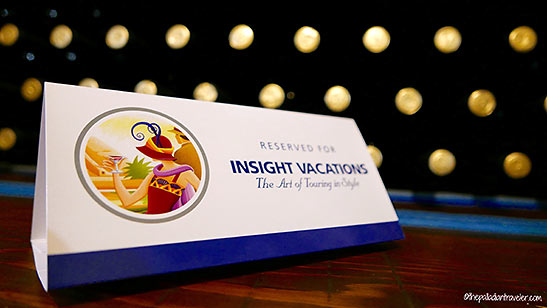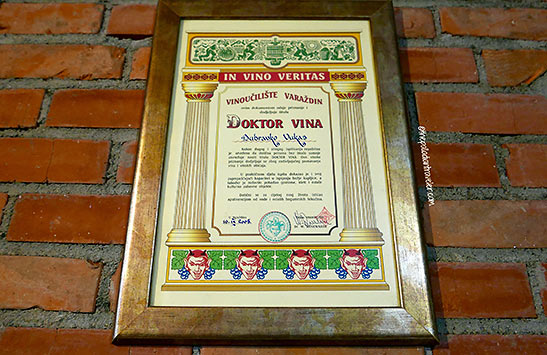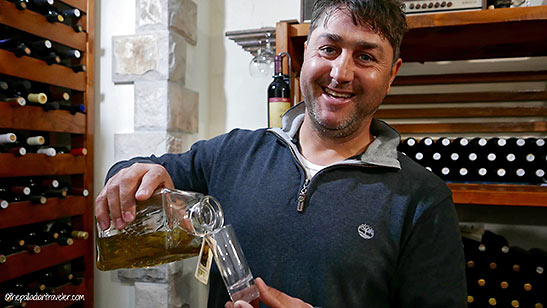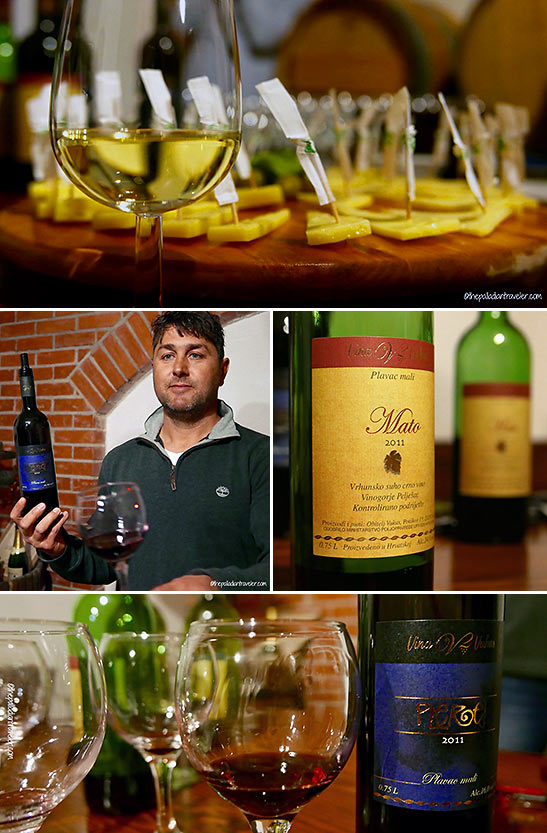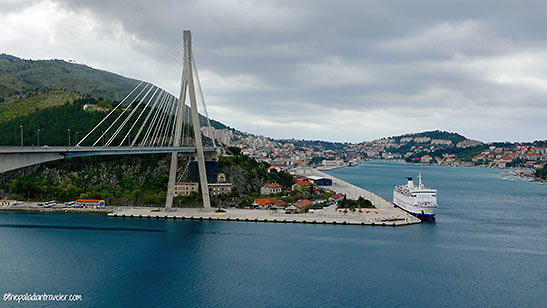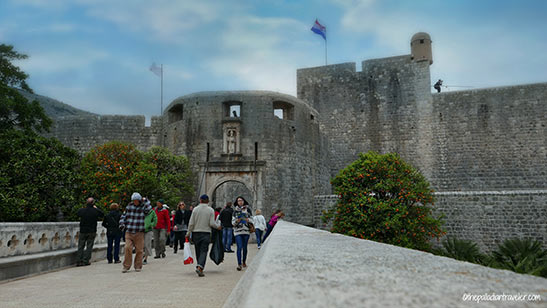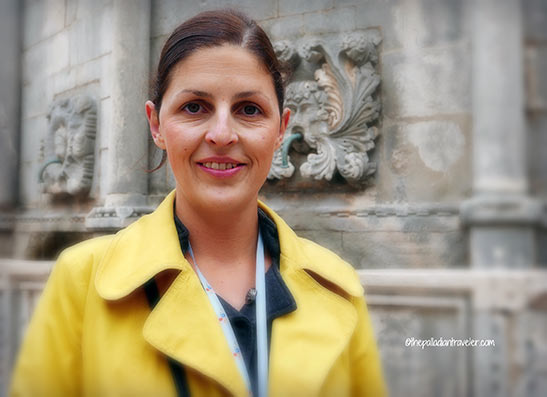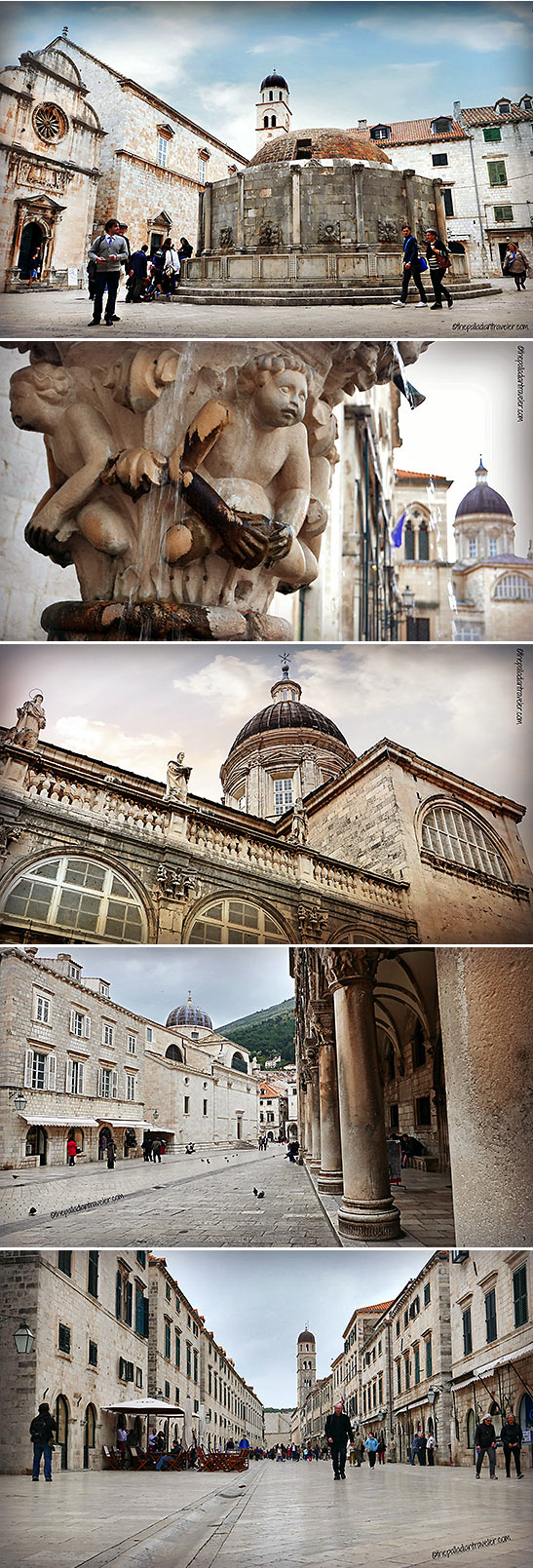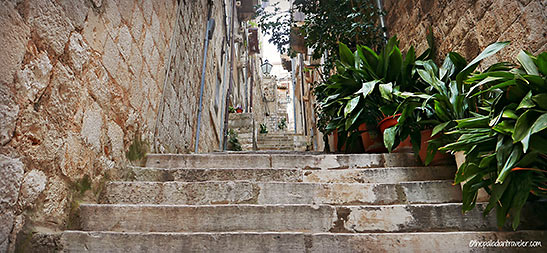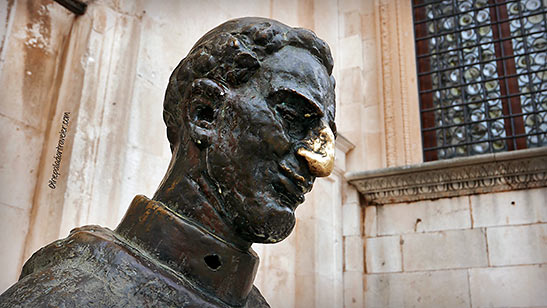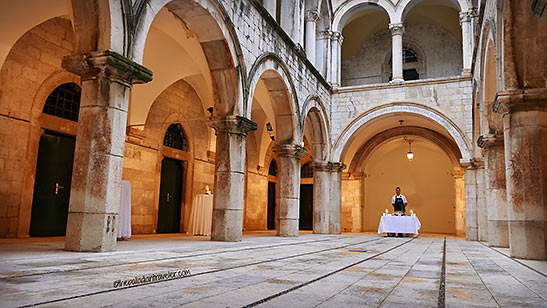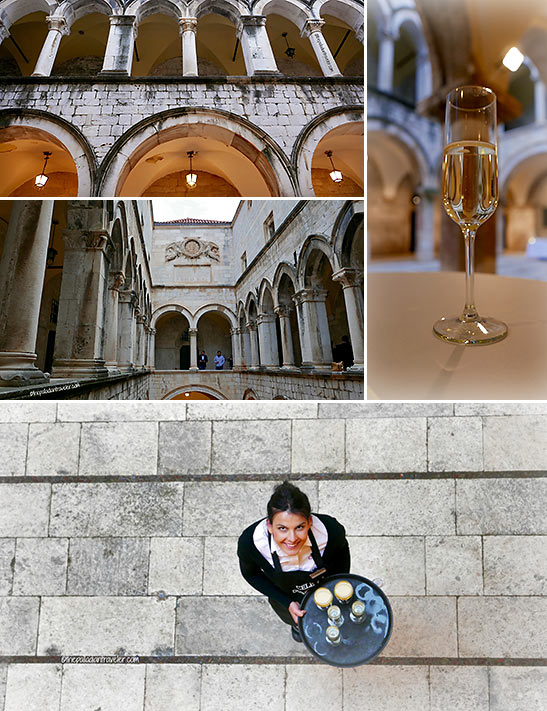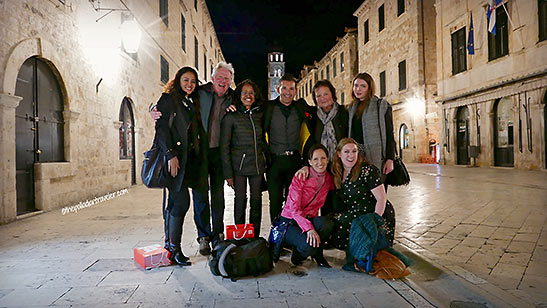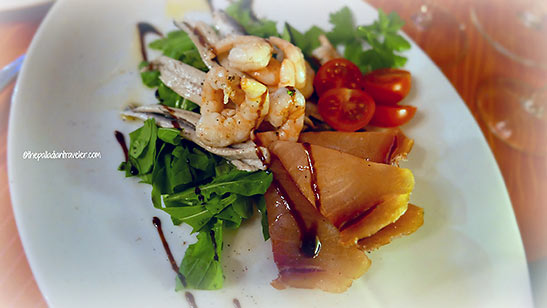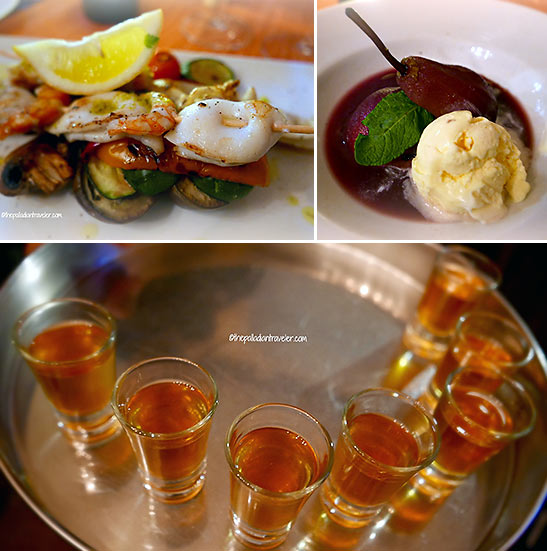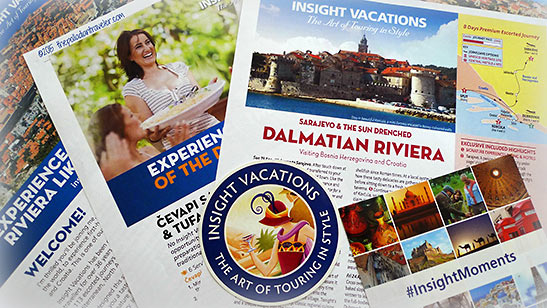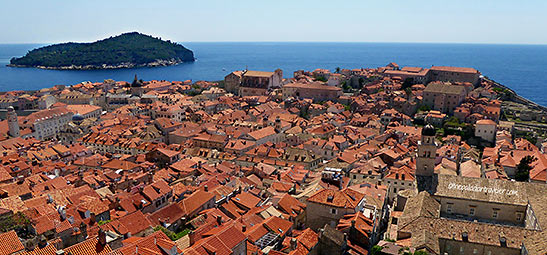 |
 |
|
 |

|
Destination Dalmatian Riviera:
Dubrovnik or Bust (Dispatch #13) Story and photos by Tom Weber
When I received my invite to board this eight-day Insight journey it read: "Experience the sun-drenched Dalmatian Riviera." Not this day, my friend. But, hey, nothing's perfect and a bit of inclement weather won't dampen our spirits as we cruise southward across the scenic Pelješac Peninsula via the historic and reconstructed Napoleon Road.
Covered in evergreen vegetation – Mediterranean plant life, fruit trees, olive groves and vineyards – this route, built by Emperor Bonaparte two centuries ago, today is one of Croatia's impressive wine roads as our business-class legroom coach comes to a full stop alongside Vinarija Vukas, the Vukas Winery, at the top of a hill in the village of Ponikve.
It's only 11:00 a.m., but we're up for a wine tasting. After all, we are the "band of merry media." Need I say more.
The plaque on the main winery wall tells it all, Doktor Vina (Doctor of Wine), as Dubvrako "Doc" Vukas, the co-owner of the 60+ year-old, family-run estate, wastes no time and quickly introduces us to rakija, a brandy made in a variety of flavors that's the national firewater all across the Balkans.
"We use it as an aperitif," our host tells us, as we queue up and pick our fruit-flavored potent potable. I select lemon. It goes down smoothly warming my insides, then suddenly explodes. Whoa!
Cultivating only Plavac Mali – the "little blue" love child of Zinfandel and Dobričić grapes – the wines that emerge from the Vukas estate are robust, to say the least. Along with nibbles of local cheese and homemade bread dipped in the estate's extra virgin olive oil, we sample a trio: the white Rukatac (13.1%) and the reds Mato (15.1%) and Plerej Grand Cru (16.2%). Swirl. Smell. Sip.
Heads a bit cloudy, like the weather outside, we bid farewell to our affable host, clamber back on board the motor coach and head further south along the Adriatic Highway, stopping just short of the Most dr. Franja Tuđmana (Franjo Tuđman Bridge) for a quick photo op. The bridge, named in honor of Croatia's first president, is a 518 meters-long, cable-stayed expanse that crosses the Rijeka Dubrovačka inlet at the Port of Gruž, just outside Dubrovnik.
Across the bridge we go, passing by oversized cruise ships and ferries until we come to a full stop just outside Pile Gate, our entrance into Dubrovnik's Grad (Old City), a UNESCO World Heritage Site AND the make-believe King's Landing for the hit television fantasy-drama series Game of Thrones.
Met by Ida, Insight's expert local guide sporting a bright, canary-yellow raincoat – easy to follow in a crowd – we're taken on a quick, one-hour orientation of the Grad.
A remarkably well-preserved, late-medieval walled city, Dubrovnik has a regular street layout on the flat – all paved in marble – and narrow alleyways that climb, and climb and climb.
"There are 5,423 steps here in the Grad," Ida tells us, "and if you stay here long enough you can walk them all." Showcasing Renaissance and Baroque architecture, it's hard not to be in awe over the sheer beauty and atmosphere that is uniquely Dubrovnik.
Magnificent fortifications, monumental gates, the 11th century Rector's Palace, the 14th century Franciscan Monastery, the rebuilt Cathedral of the Assumption, Onofrio Fountain and the statue of 16th century playwright Marin Držić, the so-called Croatian Shakespeare – rub his nose and it just might bring you good luck – are just a few of the jewels tucked inside the walls of this captivating city.
Our stroll around town ends at the entryway of the ornate, 16th century Sponza Palace where we're greeted by members of the Dubrovnik Tourist Board for an early-evening aperitif of sparkling Prosecco.
A rectangular building with an open-air courtyard and a loggia, the palace, formerly the Customs House, today serves as the city's archives. If you'll grab a flute, let's have a look around. Insight likes to spread the wealth around whenever it blows into town. That's why sometime on every journey it randomly divides its guests into small groups for a "dine around" to a selection of local eateries.
My party of eight, plus an Insight "chaperone" hits the shiny marble pavement and makes its way to Konobo Dalmatino, an upscale, "slow food" tavern, where we get to choose our three-course feast a la čarte.
Given Dubrovnik's location overlooking the Adriatic Sea, I must order fish. And I do.
I select a starter of marinated anchovies, smoked swordfish and shrimp. My main course is skewered squid and prawns. For dessert, I savor local pears marinated in red wine topped with vanilla ice cream. And, I cap my dinner with an espresso and an "on the house" shot of rakija, a fig brandy popular along the Dalmatian Coast. Živjeli! (Cheers!)
For complete information on Insight's 112 premium and luxury-escorted itineraries around Europe, just click HERE, or call toll free 1-888-680-1241, or contact your travel agent.
Lord Byron, when he first laid eyes on Dubrovnik, described her as the "Pearl of the Adriatic" and the moniker stuck. I won't argue with the flamboyant Romantic poet, but Dubrovnik could also be called the "Terracotta of the Adriatic." We'll find out tomorrow when we climb the Old City's walls for some bird's-eye views of those iconic baked-earth rooftops that look out to sea. Laku noć (Good night). Related Articles:
|
|
Feedback for Destination Bosnia: Inside Sarajevo's Tunnel of Hope Spent time in Sarajevo in the fall of 1973…beer was excellent! --- David * * * * Hi Tom, I must say, you're photographs are always amazing. They are top notch. You bring so much class to Traveling Boy. It's photographs like yours that make me want to go out and do my own traveling. Please don't get tired of sending us your amazing adventures. It's such a delight for the soul. --- Raoul, Whittier, CA * * * * Hi Tom: --- David * * * * Hey Tom – Wow! Love those photos – they are so super that they make me A) Want to start eating NOW. B) Go there myself. C) See all that pristine beauty that looks so restful and peaceful. Great story, superb pix!!! Bravo!! --- John, Los Angeles, CA * * * * Feedback for Destination Southwestern France: Saint-Émilion Good job, Tom, and timely info. St. Émilion is in the list of places Jim Hayes and I will visit in September 2014. If we get the chance, we will exploit your experience to enhance the trip! --- Bobby Harper, Dameron, MD * * * * Feedback for Vicenza Walks – Monte Berico I lived in Vicenza for 4 years in the U.S. ARMY from 1963 to 1967. A wonderful place to explore. Palladio’s works are amazing. Have been back twice since and find new places to visit. My favorite is MONTE BERICO where I have some wonderful photos of my family. --- Dr. Albert Pizzi, Hanover, MA * * * * I liked the new TB particularly the Vicenza article that took me back as a youth when we lived in Naples and travelled up there for a baseball tourney (U.S. Military Bases dependent schools played each other.) Took me back to the plaza. --- Bill Feedback for A Canterbury Trail (Sutri) Very interesting note. I have wedroned which route the early pre-Christian and Christian pilgrims travelled to Rome from England. Is it still possible to travel the Francigena trail? --- Pawel You can find out more info on walking tours of Via Francigena at this site: http://www.compagniadeicammini.it/en/. Thanks for stopping by and commenting.. Tom * * * * Good article, enjoyed reading it. Saved your recommended sights for future use. --- Dardenne Prairie, MO * * * * You're going to be great at this Tom. Congrats. --- Donna Vissa -Montreal
|
This site is designed and maintained by WYNK Marketing. Send all technical issues to: support@wynkmarketing.com

|






